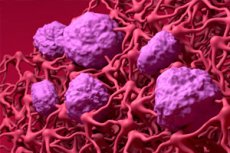
麻省理工学院和哈佛大学布罗德研究所的科学家进行的一项研究表明,一种利用人类蛋白质的基因治疗载体能够有效穿过血脑屏障,将目标基因递送至携带人类蛋白质的小鼠脑内。这一进展有望显著改善人类脑部疾病的治疗。
基因疗法有望治疗目前尚无治愈方法且治疗方案有限的严重遗传性脑疾病。然而,现有的基因递送方法,例如腺相关病毒 (AAV),无法有效穿过血脑屏障将治疗物质递送至脑部。数十年来,这一挑战一直阻碍着更安全、更有效的脑部疾病基因疗法的开发。
现在,Ben Deverman 实验室的研究人员已经创建了第一个已发表的 AAV,它以人类蛋白质为目标,将基因递送到具有人类转铁蛋白受体的小鼠的大脑中。这种病毒与人类转铁蛋白受体结合,而人类转铁蛋白受体在人类的血脑屏障中含量丰富。在一项发表在《科学》杂志上的新研究中,研究小组表明,当将他们的 AAV 注射到具有人类转铁蛋白受体的小鼠血液中时,其进入大脑的水平比 FDA 批准的中枢神经系统基因治疗中使用的 AAV AAV9 高得多。这种病毒还能到达大量重要的脑细胞类型,包括神经元和星形胶质细胞。研究人员还表明,他们的 AAV 能够将 GBA1 基因的拷贝递送到大脑中的大量细胞中,该基因与戈谢病、路易体痴呆和帕金森病有关。
科学家表示,他们的新型 AAV 可能是治疗由单基因突变引起的神经发育障碍(如雷特综合征或 SHANK3 缺乏症)以及溶酶体贮积症(如 GBA1 缺乏症)和神经退行性疾病(如亨廷顿氏病、朊病毒病、弗里德赖希共济失调以及单基因形式的 ALS 和帕金森氏病)的更好选择。
“自加入布罗德研究所以来,我们的使命一直是为中枢神经系统的基因治疗创造机会。如果这种AAV在人体研究中达到我们的预期,它将比目前的治疗方法更有效。”该研究的资深作者本·德弗曼说道。
研究还发现,与AAV9相比,新型AAV能够显著增强基因向大脑的传递。AAV9已被批准用于治疗婴儿脊髓性肌萎缩症,但在向成人大脑传递基因方面效果相对较差。新型AAV能够覆盖大脑各区域高达71%的神经元和92%的星形胶质细胞。
科学家认为,他们开发的新型AAV在治疗神经退行性疾病方面具有巨大潜力,可以显著改善患者的生活质量。
研究结果发表在《科学》杂志上。

